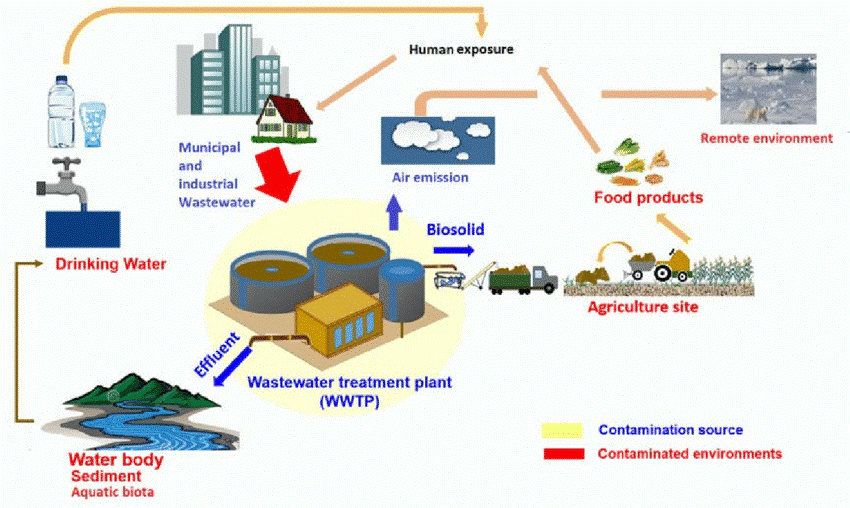How PFAS Treatment Reduces Environmental Impact and Improves Public Safety
How PFAS Treatment Reduces Environmental Impact and Improves Public Safety
Blog Article
Innovative PFAS Therapy Solutions for Safer Water
The boosting prevalence of PFAS contamination in water supplies requires a critical exam of innovative treatment options. In addition, arising bioremediation techniques offer a more sustainable strategy to taking on PFAS obstacles. pfas management.
Overview of PFAS Contamination
PFAS contamination has emerged as a considerable environmental and public health and wellness problem. Per- and polyfluoroalkyl materials (PFAS) are a team of artificial chemicals recognized for their perseverance in the environment and body, leading them to be typically referred to as "permanently chemicals." These substances have actually been extensively made use of in various markets, consisting of firefighting foams, water-repellent materials, and food packaging, mainly due to their water- and grease-resistant buildings.
The prevalent use PFAS has actually led to their detection in soil, water products, and also in the blood of people and animals. Studies have actually connected PFAS exposure to various health issues, consisting of developing results in babies, immune system dysfunction, and numerous kinds of cancer. Additionally, the environmental persistence of these compounds complicates their deterioration and removal, increasing concerns about long-lasting eco-friendly impacts.
Regulatory bodies are increasingly executing stringent standards to keep track of and decrease PFAS degrees in alcohol consumption water and various other ecological mediums. As awareness of PFAS contamination expands, it has actually come to be crucial for areas and industries to seek effective treatment solutions to reduce exposure and guard public health and wellness.
Advanced Filtration Technologies
As the necessity to address PFAS contamination increases, progressed filtering technologies have arised as a pivotal component in the removal efforts focused on removing these consistent chemicals from water resources. These modern technologies take advantage of innovative mechanisms to properly target and capture PFAS compounds, which are notoriously immune to conventional therapy techniques.
Among the most appealing approaches is using granular turned on carbon (GAC), which adsorbs PFAS molecules because of its high surface area and porous framework. This method has been extensively carried out in both municipal and industrial settings, showing considerable reductions in PFAS concentrations. In addition, ion exchange resins have actually obtained traction, especially designed to uniquely bind PFAS ions from water, hence promoting their elimination.
Membrane filtering innovations, such as reverse osmosis and nanofiltration, likewise reveal effectiveness in PFAS removal by literally separating pollutants from water - pfas management. These systems can accomplish high levels of purity, making them appropriate for alcohol consumption water applications
Chemical Therapy Advancements
Various chemical therapy advancements are being discovered to properly address PFAS contamination in water supplies. One appealing approach includes making use of advanced oxidation procedures (AOPs), which utilize effective oxidants such as ozone, hydrogen peroxide, or chlorine dioxide incorporated with UV light to break down PFAS substances right into much less damaging compounds. This approach has actually shown effectiveness in laboratory settings, moved here showing prospective for scalability in real-world applications.
One more ingenious technique is the advancement of ion-exchange resins particularly made to target PFAS. These resins can uniquely adsorb PFAS substances from water, allowing for their removal during therapy procedures. Current advancements have boosted the efficiency and capability of these resins, making them a favorable option for water therapy centers.
Additionally, researchers are investigating making use of chemical representatives like persulfate and ferrous ions to improve the degradation of PFAS in infected water. These agents can induce chemical responses that facilitate the description breakdown of consistent PFAS compounds.
Emerging Bioremediation Strategies
Recent improvements in chemical therapy advancements have actually paved the way for exploring bioremediation methods as a sensible alternative for resolving PFAS contamination. Bioremediation utilizes the all-natural metabolic processes of microbes to deteriorate or change toxins, making it an enticing approach for taking on consistent impurities like PFAS.
Arising strategies in bioremediation include making use of genetically crafted microorganisms that can particularly target and damage down PFAS compounds. These microbial strains are being developed for their improved degradation capacities, increasing the effectiveness of the remediation process. In addition, scientists are investigating the potential of plant-assisted bioremediation, where specific plant species might uptake and withdraw PFAS from contaminated soil and water.
Another promising approach is the application of bioaugmentation, which involves introducing valuable microorganisms into polluted atmospheres to boost the deterioration of PFAS. This approach can facilitate faster remediation timelines and boost total efficiency.

Regulative Structures and Criteria
A detailed governing framework is crucial for successfully taking care of PFAS contamination and guaranteeing public health and wellness protection. The boosting acknowledgment of per- and polyfluoroalkyl materials (PFAS) as toxic wastes has prompted numerous federal and state agencies to develop criteria that control their existence in water materials. The United State Environmental Defense Company (EPA) has established health and wellness advisories and is functioning toward setting enforceable limits for PFAS in alcohol consumption water.
State-level regulations differ significantly, with some states taking on more stringent standards than those suggested by the EPA. These laws often right here include optimum contaminant degrees (MCLs) for details PFAS substances, surveillance demands, and reporting obligations for water energies. In addition, emerging structures concentrate on the remediation of contaminated websites, emphasizing the demand for reliable treatment technologies.

Conclusion
Finally, the development and application of ingenious PFAS therapy remedies are essential for resolving the prevalent issue of water contamination. Advanced filtration modern technologies, chemical treatments, and arising bioremediation strategies jointly offer a diverse strategy to efficiently decrease and break down PFAS levels. As regulative frameworks remain to evolve, incorporating these technologies will certainly be vital to secure public wellness and recover the honesty of polluted water resources, eventually contributing to a cleaner and more secure atmosphere.
Report this page